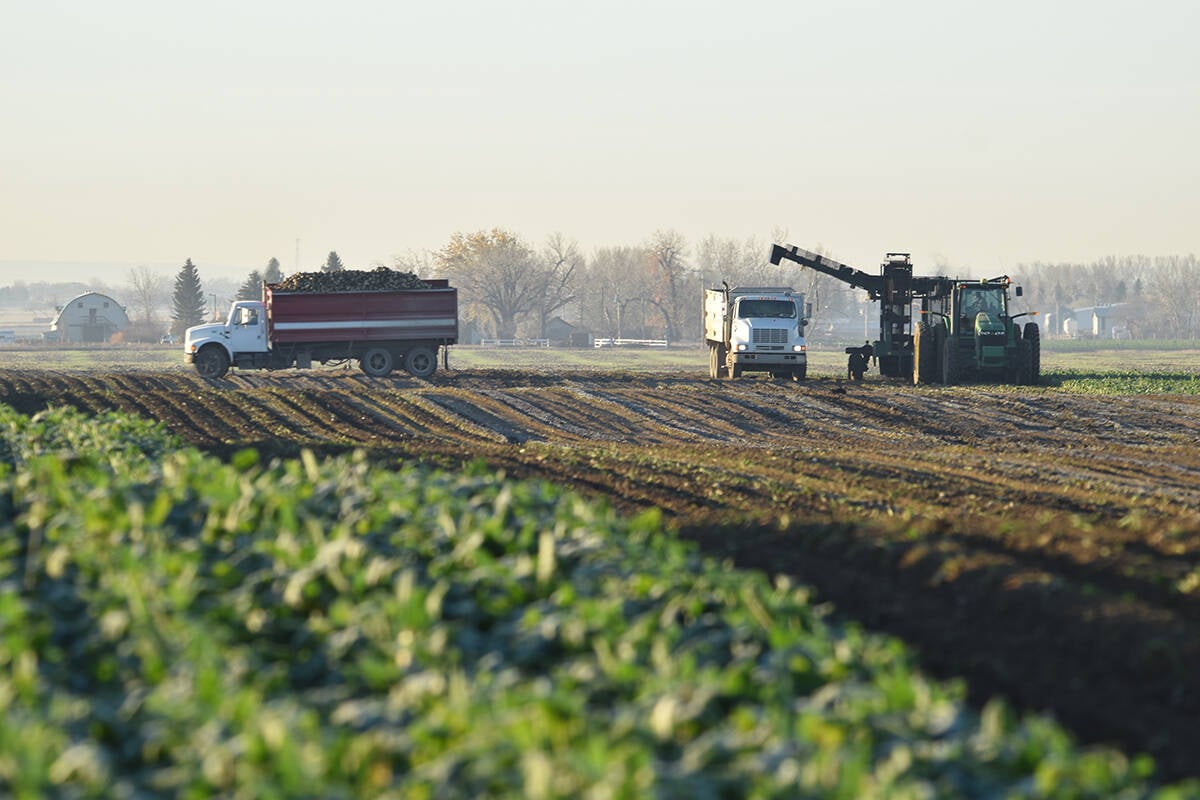Acreages, mines, well sites and cities continue to alter the Alberta landscape
In the last 100 years, Alberta has cultivated 27 million acres, put livestock on 35 million acres, built towns and cities on more than 617,000 acres, put acreages on 840,000 acres and used more than 2.5 million acres for energy sector development.
The result? Four million people, a gross domestic product of $40 billion from natural resources alone and the loss of biodiversity, natural landscapes and habitat.
Alberta’s affluence has come at a cost, and landscape ecologist Brad Stelfox says people need to know the tradeoffs made in terms of natural landscape to enable their current lifestyle.
Read Also

Canada the sole G7 nation without a Domestic Sugar Policy to aid local sugar beet production
Canadian sugar beet industry vastly different to US with free-market system compared to protective government-regulated sugar program
Once fully informed, they may decide the tradeoffs have been worth it, said Stelfox.
The point is that both gains and losses have to be considered as Albertans plan the future.
“I do wonder whether or not Albertans know, objectively, empirically, what they traded off for the unbelievable lifestyle that we’ve got,” Stelfox told a Jan. 13 meeting organized by the Alberta chapter of the Wildlife Society in Lethbridge.
Stelfox is the driver behind the ALCES group of planners, environmental scientists, industrialists and ecologists who have developed a model to track and predict effects from changes in land use.
He noted the polarity of factions involved in land use, with environmentalists at one end and business and industry on the other, and the need for discussion among all Albertans.
“The more we discuss it, both the benefits and the challenges of land use, the more we are building policy that is probably more helpful to today and tomorrow’s Albertans,” said Stelfox in an interview after his talk.
The ALCES systems model uses data on natural landscape, forest age, water availability, population density and other variables to predict the effects of future land uses.
Agriculture, for many years the defining land use, involved 9,000 sq. km of cultivated land in 1910. In 2014, it was 85,000 sq. km.
“The model suggests that if anything, our amount of cropland will probably go down and the primary reason for that is incremental loss of our crops to expanding footprint of residential, and to a degree transportation, and to a degree the hydrocarbon sector,” said Stelfox.
Towns, cities and farms today use 5,200 sq. km of land, compared to 110 sq. km in 1910. Stelfox predicted that the amount of land used for residential will more than double by 2060 to 12,600 sq. km.
“A lot of that is rural residential, its acreages,” he said.
“We’ve got more area in acreages than we do in all of our cities and towns in Alberta.”
Road access to those acreages, as well as to provincial mines, well sites, forests, farms and cities, has used 7,600 sq. km of land, compared to 333 sq. km in 1910.
“Our landscape is changing,” he said.
“Our ability to distribute ourselves and move around the landscape is becoming exceptionally easy, and this plays into biodiversity in many different ways.”
His model traces the growth of Alberta’s cattle industry from 800,000 head in 1910 to five million in 2014.
“The model suggests that in all likelihood we’re not going to see either a rapid increase or decline in cattle, but we’re seeing a redistribution of cattle as people try and figure out where they’re going to acquire the forage crops to feed them in the winter and where they’re going to have access to water.”
Stelfox said land use drives the economy. Agriculture, forestry, mining and the energy sector could increase the provincial natural resource GDP to $72 billion by 2060, which will depend upon decisions made about future land use.
Projections indicate the loss of five to 7.5 million acres of natural landscape in the next five decades, at the current pace.
“Clearly we in Alberta need a new way of thinking,” Stelfox said.
“We need to make sure people are aware of what the tradeoffs are. Are they good tradeoffs? Has there been a good dialogue?
“It’s not a free ride. There is a tradeoff, and that requires a conversation.”
barb.glen@producer.com















